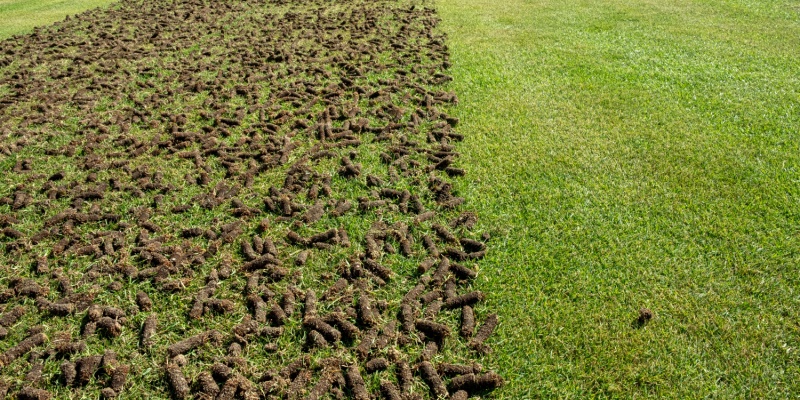Lawn aeration involves perforating the soil with small holes to allow air, water, and nutrients to penetrate the grass roots. Timing your lawn aeration correctly can make a significant difference in the effectiveness of the treatment. Here’s a guide to understanding the best time of year for lawn aeration treatment:
Understanding Lawn Aeration
Aeration helps alleviate soil compaction, improve water absorption, and enhance root development. It is particularly beneficial for lawns that experience heavy foot traffic, are prone to thatch buildup, or have clay-heavy soils. Knowing when to aerate your lawn is crucial to achieving the best results.
Cool-Season Grasses
Cool-season grasses, such as Kentucky bluegrass, fescue, and ryegrass, are common in northern regions and thrive in cooler temperatures. The best time to aerate these types of grasses is during their peak growing periods.
1. Early Fall:
The ideal time to aerate cool-season grasses is in early fall, typically between late August and early October. During this period, the grass is actively growing, and the cooler temperatures reduce stress on the lawn. Aeration in the fall allows the grass to recover quickly and build stronger root systems before winter.
2. Early Spring:
If you miss the fall window, early spring is the next best time to aerate cool-season grasses. Aeration in late March to early April can help the grass prepare for the upcoming growing season. However, avoid aerating too early when the ground is still wet from the winter thaw to prevent soil compaction.
Warm-Season Grasses
Warm-season grasses, such as Bermuda, St. Augustine, and zoysia, thrive in warmer temperatures and are common in southern regions. The best time to aerate these grasses is during their active growing season.
1. Late Spring to Early Summer:
The optimal time to aerate warm-season grasses is from late April to early June. During this period, the grass is in its peak growing season and can recover quickly from the aeration process. Aerating in late spring or early summer promotes healthy growth and helps the lawn withstand the heat and drought of summer.
Factors to Consider
1. Soil Moisture:
The soil should be moist but not waterlogged when you aerate. Aerating overly wet soil can damage the grass and roots.
2. Lawn Health:
If your lawn is struggling with weeds, pests, or diseases, address these issues before aerating. Aeration can spread weed seeds and diseases if the lawn is already compromised.
Timing your lawn aeration treatment correctly is essential for achieving a healthy, vibrant lawn. For cool-season grasses, early fall and early spring are the best times to aerate, while late spring to early summer is ideal for warm-season grasses. By considering factors such as soil moisture, weather conditions, and lawn health, you can ensure that your aeration treatment is effective and beneficial for your lawn. Properly timed aeration promotes stronger root systems, improved water absorption, and overall healthier grass, leading to a lush, green lawn that enhances the beauty of your home. The pros at Weed Busters can help you with lawn aeration and all of your lawn care needs.

